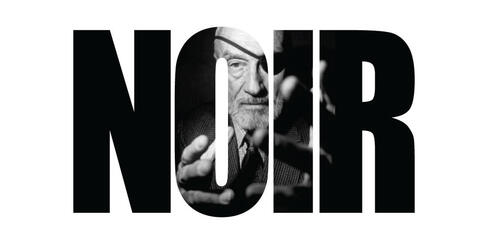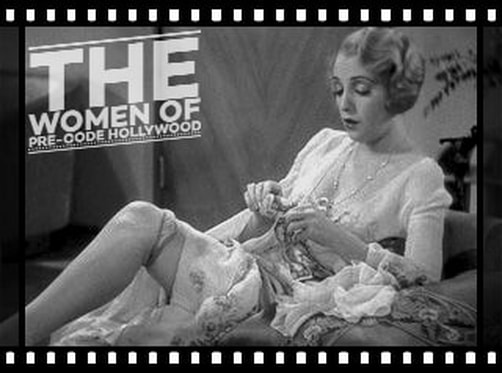
Ginger Rogers
Active - 1929 - 1995 | Born - Jul 16, 1911 in Independence, MO | Died - Apr 25, 1995 in Rancho Mirage, CA | Genres - Comedy, Romance, Musical, Drama | Height: 5’ 4-1/2”
In step with Fred Astaire, Ginger Rogers was one half of the most legendary dancing team in film history; she was also a successful dramatic actress, even winning a Best Actress Oscar. Born Virginia McMath on July 16, 1911, in Independence, MO, as a toddler, she relocated to Hollywood with her newly divorced mother, herself a screenwriter.
On Broadway, Rogers earned strong critical notice as well as the attention of Paramount, who cast her in 1930’s Young Man of Manhattan, becoming typecast as a quick-witted flapper. Back on Broadway, she and Ethel Merman starred in Girl Crazy. Upon signing a contract with Paramount, she worked at their Astoria studio by day and returned to the stage in the evenings; under these hectic conditions she appeared in a number of films, including The Sap From Syracuse, Queen High, and Honor Among Lovers. Rogers subsequently asked to be freed of her contract, but soon signed with RKO. When her Broadway run ended, she went back to Hollywood, starring in 1931’s The Tip-Off and The Suicide Fleet. When 1932’s Carnival Boat failed to attract any interest, RKO dropped her and she freelanced around town, co-starring with Joe E. Brown in the comedy The Tenderfoot, followed by a thriller, The Thirteenth Guest, for Monogram. Finally, the classic 1933 musical 42nd Street poised her on the brink of stardom, and she next appeared in Warner Bros.’ Gold Diggers of 1933.
After starring opposite Henry Fonda in an episode of Tales of Manhattan, she signed a three-picture deal with Paramount expressly to star in the 1944 musical hit Lady in the Dark. There she also appeared in Billy Wilder’s The Major and the Minor and Leo McCarey’s Once Upon a Honeymoon. Rogers then made a series of films of little distinction, including 1945’s Weekend at the Waldorf (for which she earned close to 300,000 dollars, making her one of the highest-paid women in America), the following year’s Magnificent Doll, and the 1947 screwball comedy It Had to Be You.
Rogers starred in a trio of 1952 Fox comedies -- We’re Not Married, Monkey Business, and Dreamboat -- which effectively halted whatever momentum her reunion with Astaire had generated, a situation remedied by neither the 1953 comedy Forever Female nor by the next year’s murder mystery Black Widow. In Britain, she filmed Beautiful Stranger, followed by 1955’s lively Tight Spot. With 1957’s farcical Oh, Men! Oh, Women!, Rogers’ Hollywood career was essentially finished, and she subsequently appeared in stock productions of Bell, Book and Candle, The Unsinkable Molly Brown, and Annie Get Your Gun.
By the 1970s, Rogers was regularly touring with a nightclub act, and in 1980 headlined Radio City Music Hall. A tour of Anything Goes was among her last major performances. In 1991, she published an autobiography, Ginger: My Story. Rogers died April 25, 1995.
Available Films:
Active - 1929 - 1995 | Born - Jul 16, 1911 in Independence, MO | Died - Apr 25, 1995 in Rancho Mirage, CA | Genres - Comedy, Romance, Musical, Drama | Height: 5’ 4-1/2”
In step with Fred Astaire, Ginger Rogers was one half of the most legendary dancing team in film history; she was also a successful dramatic actress, even winning a Best Actress Oscar. Born Virginia McMath on July 16, 1911, in Independence, MO, as a toddler, she relocated to Hollywood with her newly divorced mother, herself a screenwriter.
On Broadway, Rogers earned strong critical notice as well as the attention of Paramount, who cast her in 1930’s Young Man of Manhattan, becoming typecast as a quick-witted flapper. Back on Broadway, she and Ethel Merman starred in Girl Crazy. Upon signing a contract with Paramount, she worked at their Astoria studio by day and returned to the stage in the evenings; under these hectic conditions she appeared in a number of films, including The Sap From Syracuse, Queen High, and Honor Among Lovers. Rogers subsequently asked to be freed of her contract, but soon signed with RKO. When her Broadway run ended, she went back to Hollywood, starring in 1931’s The Tip-Off and The Suicide Fleet. When 1932’s Carnival Boat failed to attract any interest, RKO dropped her and she freelanced around town, co-starring with Joe E. Brown in the comedy The Tenderfoot, followed by a thriller, The Thirteenth Guest, for Monogram. Finally, the classic 1933 musical 42nd Street poised her on the brink of stardom, and she next appeared in Warner Bros.’ Gold Diggers of 1933.
After starring opposite Henry Fonda in an episode of Tales of Manhattan, she signed a three-picture deal with Paramount expressly to star in the 1944 musical hit Lady in the Dark. There she also appeared in Billy Wilder’s The Major and the Minor and Leo McCarey’s Once Upon a Honeymoon. Rogers then made a series of films of little distinction, including 1945’s Weekend at the Waldorf (for which she earned close to 300,000 dollars, making her one of the highest-paid women in America), the following year’s Magnificent Doll, and the 1947 screwball comedy It Had to Be You.
Rogers starred in a trio of 1952 Fox comedies -- We’re Not Married, Monkey Business, and Dreamboat -- which effectively halted whatever momentum her reunion with Astaire had generated, a situation remedied by neither the 1953 comedy Forever Female nor by the next year’s murder mystery Black Widow. In Britain, she filmed Beautiful Stranger, followed by 1955’s lively Tight Spot. With 1957’s farcical Oh, Men! Oh, Women!, Rogers’ Hollywood career was essentially finished, and she subsequently appeared in stock productions of Bell, Book and Candle, The Unsinkable Molly Brown, and Annie Get Your Gun.
By the 1970s, Rogers was regularly touring with a nightclub act, and in 1980 headlined Radio City Music Hall. A tour of Anything Goes was among her last major performances. In 1991, she published an autobiography, Ginger: My Story. Rogers died April 25, 1995.
Available Films:
42ND STREET BACHELOR MOTHER BLACK WIDOW GAY DIVORCEE, THE KITTY FOYLE LUCKY PARTNERS |
MONKEY BUSINESS ONCE UPON A HONEYMOON STAGE DOOR STAR OF MIDNIGHT TALES OF MANHATTAN TENDER COMRADE |
TIGHT SPOT TIP-OFF, THE TOM, DICK AND HARRY TOP HAT UPPER WORLD |
Trivia:
Was given the name "Ginger" by her little cousin who couldn't pronounce "Virginia" correctly.
Was Hollywood's highest paid star of 1942.
Turned down lead roles in To Each His Own (1946) and The Snake Pit (1948). Both of these roles went on to be played to great acclaim by Olivia de Havilland. She also turned down Barbara Stanwyck's role in "Ball of Fire.".
Her first teaming with Fred Astaire, Flying Down to Rio (1933), was her 20th film appearance but only Astaire's second.
Turned down Donna Reed's role in It's a Wonderful Life (1946).
[on working with Katharine Hepburn] "She is snippy, you know, which is a shame. She was never on my side."
[on Fred Astaire, 1976] "I adore the man. I always have adored him. It was the most fortunate thing that ever happened to me, being teamed with Fred: he was everything a little starry-eyed girl from a small town ever dreamed of."
Was given the name "Ginger" by her little cousin who couldn't pronounce "Virginia" correctly.
Was Hollywood's highest paid star of 1942.
Turned down lead roles in To Each His Own (1946) and The Snake Pit (1948). Both of these roles went on to be played to great acclaim by Olivia de Havilland. She also turned down Barbara Stanwyck's role in "Ball of Fire.".
Her first teaming with Fred Astaire, Flying Down to Rio (1933), was her 20th film appearance but only Astaire's second.
Turned down Donna Reed's role in It's a Wonderful Life (1946).
[on working with Katharine Hepburn] "She is snippy, you know, which is a shame. She was never on my side."
[on Fred Astaire, 1976] "I adore the man. I always have adored him. It was the most fortunate thing that ever happened to me, being teamed with Fred: he was everything a little starry-eyed girl from a small town ever dreamed of."




